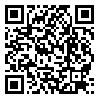Volume 4, Issue 2 (April 2020)
AOH 2020, 4(2): 542-547 |
Back to browse issues page
Download citation:
BibTeX | RIS | EndNote | Medlars | ProCite | Reference Manager | RefWorks
Send citation to:



BibTeX | RIS | EndNote | Medlars | ProCite | Reference Manager | RefWorks
Send citation to:
Tajvar A, Mortazavi Mehrizi M, Derakhshan Jazari M, Rastipisheh P, Farahbakhsh M, Ghaffari H. Assessing of Environmental and Personal Exposure to X-rays on Radiologists Working in Hospitals of Medical Sciences in Bandar Abbas. AOH 2020; 4 (2) :542-547
URL: http://aoh.ssu.ac.ir/article-1-211-en.html
URL: http://aoh.ssu.ac.ir/article-1-211-en.html
Abdolhamid Tajvar1 

 , Morteza Mortazavi Mehrizi2
, Morteza Mortazavi Mehrizi2 

 , Milad Derakhshan Jazari3
, Milad Derakhshan Jazari3 

 , Pegah Rastipisheh4
, Pegah Rastipisheh4 

 , Mohamadreza Farahbakhsh5
, Mohamadreza Farahbakhsh5 

 , Hamidreza Ghaffari *6
, Hamidreza Ghaffari *6 




 , Morteza Mortazavi Mehrizi2
, Morteza Mortazavi Mehrizi2 

 , Milad Derakhshan Jazari3
, Milad Derakhshan Jazari3 

 , Pegah Rastipisheh4
, Pegah Rastipisheh4 

 , Mohamadreza Farahbakhsh5
, Mohamadreza Farahbakhsh5 

 , Hamidreza Ghaffari *6
, Hamidreza Ghaffari *6 


1- Department of Occupational Health and Safety Engineering ,Faculty of Health,Hormozgan University of Medical Sciences,Bandar Abbas,Iran
2- Department of Occupational Health Engineering, School of Health, shahid sadoughi university of medical sciences, yazd, iran
3- Department of Public Health,Faculty of Health,Baqiyatallah University of Medical Sciences,Tehran,Iran
4- Department of Ergonomics, School of Health, Shiraz University of Medical Sciences, Shiraz, Iran
5- Department of Occupational Health Engineering, School of Health, kerman University of Medical Sciences, kerman, Iran
6- Department of Environment Health Engineering ,Faculty of Health,Hormozgan University of Medical Sciences,Bandar Abbas,Iran ,ghaffarihrz@gmail.com
2- Department of Occupational Health Engineering, School of Health, shahid sadoughi university of medical sciences, yazd, iran
3- Department of Public Health,Faculty of Health,Baqiyatallah University of Medical Sciences,Tehran,Iran
4- Department of Ergonomics, School of Health, Shiraz University of Medical Sciences, Shiraz, Iran
5- Department of Occupational Health Engineering, School of Health, kerman University of Medical Sciences, kerman, Iran
6- Department of Environment Health Engineering ,Faculty of Health,Hormozgan University of Medical Sciences,Bandar Abbas,Iran ,
Abstract: (2059 Views)
Background: X-ray is a type of radiation that their harmful effects on human health have been confirmed. The use of radiation in hospitals and medical centers for diagnostic, therapeutic, and research tasks is inevitable and is developing. So, it is essential to measure, evaluate, and control the amount of dose received by radiologists. Methods: In the first phase of this study, using the checklist to study the results of badge film and how to use individual protective equipment in hospitals surveyed in this investigation and in the second phase, using the Radiometer (05-MKS) TERRA model of the x-ray in different departments of the study hospitals was measured. Results: The maximum dose measured in different departments of hospitals studied by 19 micro Sievert/hour was reported, and in none of the hospitals, the dose has been exceeded. Also, after reviewing the reports of the badge film, it was found that there were no suspicious cases that indicate an excessive receiving dose. The use of protective equipment was as in a way that 52.6 % said they were always using protective equipment, and 43.4 % said they sometimes use it. 3.9 % said they did not use X-ray protection equipment. Conclusion: Considering that the dose measured in all hospitals of the study is less than the recommended limit proposed by the International Commission for Environmental Protection and the Technical Committee of Iran's Professional Health. So, it is concluded that the radiation protection program is well executed.
Type of Study: Research |
Subject:
Special
Received: 2019/12/16 | Accepted: 2020/04/8 | Published: 2020/04/8
Received: 2019/12/16 | Accepted: 2020/04/8 | Published: 2020/04/8
Send email to the article author
| Rights and permissions | |
 |
This work is licensed under a Creative Commons Attribution-NonCommercial 4.0 International License. |




